The rugged landscape of the Cairngorms has welcomed a pack of predators into its midst, following the release of 19 wildcats into pockets of ancient Caledonian forest this year.
Once occurring throughout mainland Britain, wildcats are now a critically endangered species found only in the north-west of Scotland. The elusive animals are in steep decline, with the population estimated at between only 115 and 314 individuals.
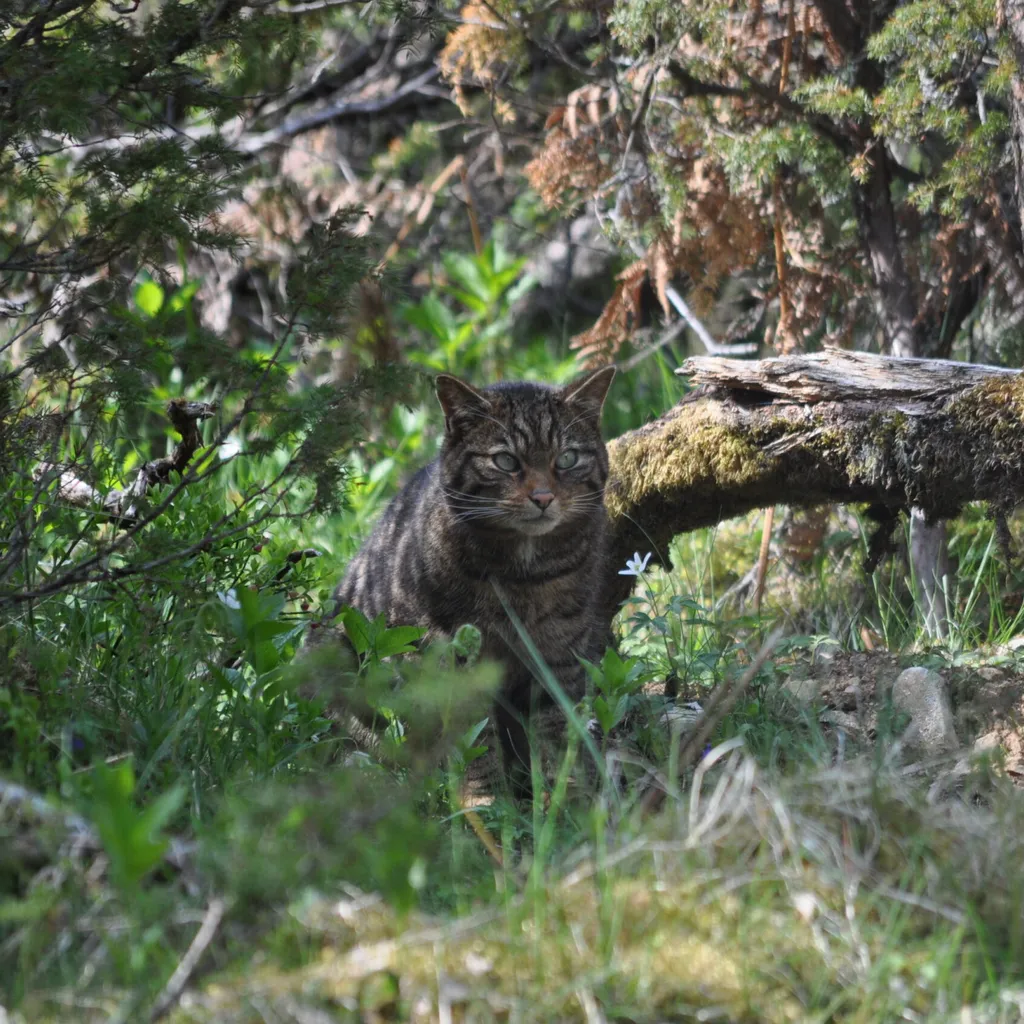
The release, organised by the Saving Wildcats project, attempts to save the species from extinction by reintroducing wildcats bred in captivity. It represents the first-ever release of wildcats in the UK. Further releases in Scotland are planned for 2024 and 2025, with more than 60 wildcats due to be introduced over the next two years.
The 19 individuals have been released in small clusters into mixed forest and grassland habitat and the wildcats’ progress is being tracked using GPS radio collars.
Wildcats are solitary creatures, except during the breeding season. The individuals are expected to venture off alone and rely on their hunting skills to survive, existing primarily on a diet of rabbit, voles and mice.
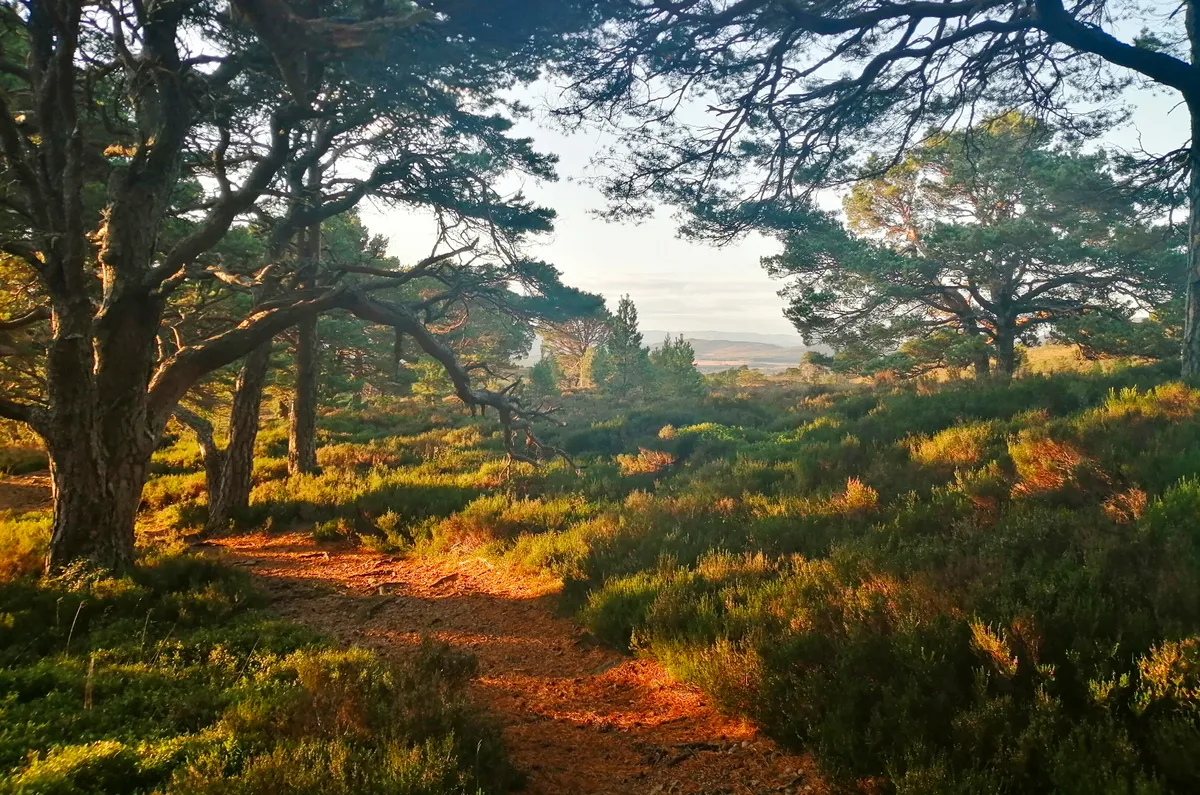
What is a Scottish wildcat?
Known as the Highland tiger, the Scottish wildcat is a native feline with mottled markings that resembles the domestic tabby cat. It can be distinguished by its larger, stockier frame, longer legs and bushy, blunt tail with a black tip and rings. Its head is large and flat with ears that stick out to the side.
Its muscular build, sharp eyesight and acute sense of smell and hearing gives it its stealth and hunting prowess.
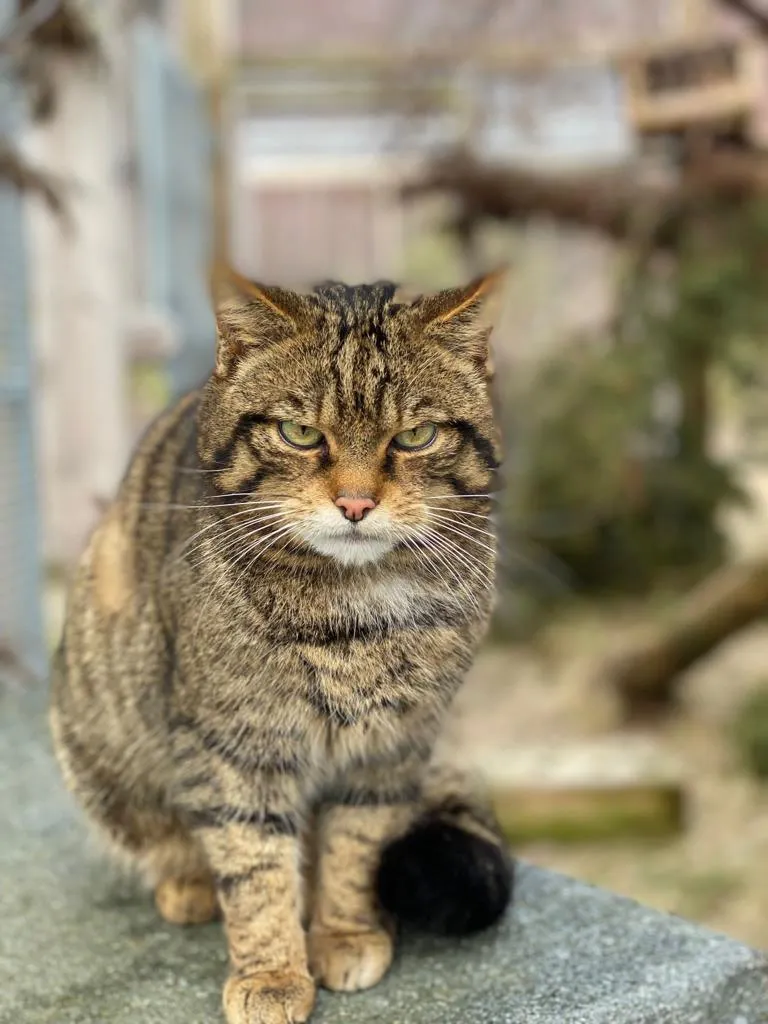
How well are the wildcats doing?
“Most individuals have stayed relatively local to the release locations so far, while others have explored more widely across Badenoch and Strathspey,” says Dr Keri Langridge, Saving Wildcats In-Situ Conservation Manager, who is leading the tracking.
“The cats are typically using a mixture of rough grassland, mixed woodland and riparian habitats, which provide prey such as mice and voles, as well as cover to hide from disturbance threats, including people and dogs.
“Camera traps which we have positioned across the release sites have also recorded videos of the animals exhibiting positive behaviours, such as hunting prey.”
The young wildcats were introduced into their new habitat by a process known as ‘soft release’, in which the animals have an acclimatisation period in the intended release habitat. The wildcats spent a period within enclosures within the Cairngorms landscape before their final release, in an effort to reduce stress and aid in post-release mortality.
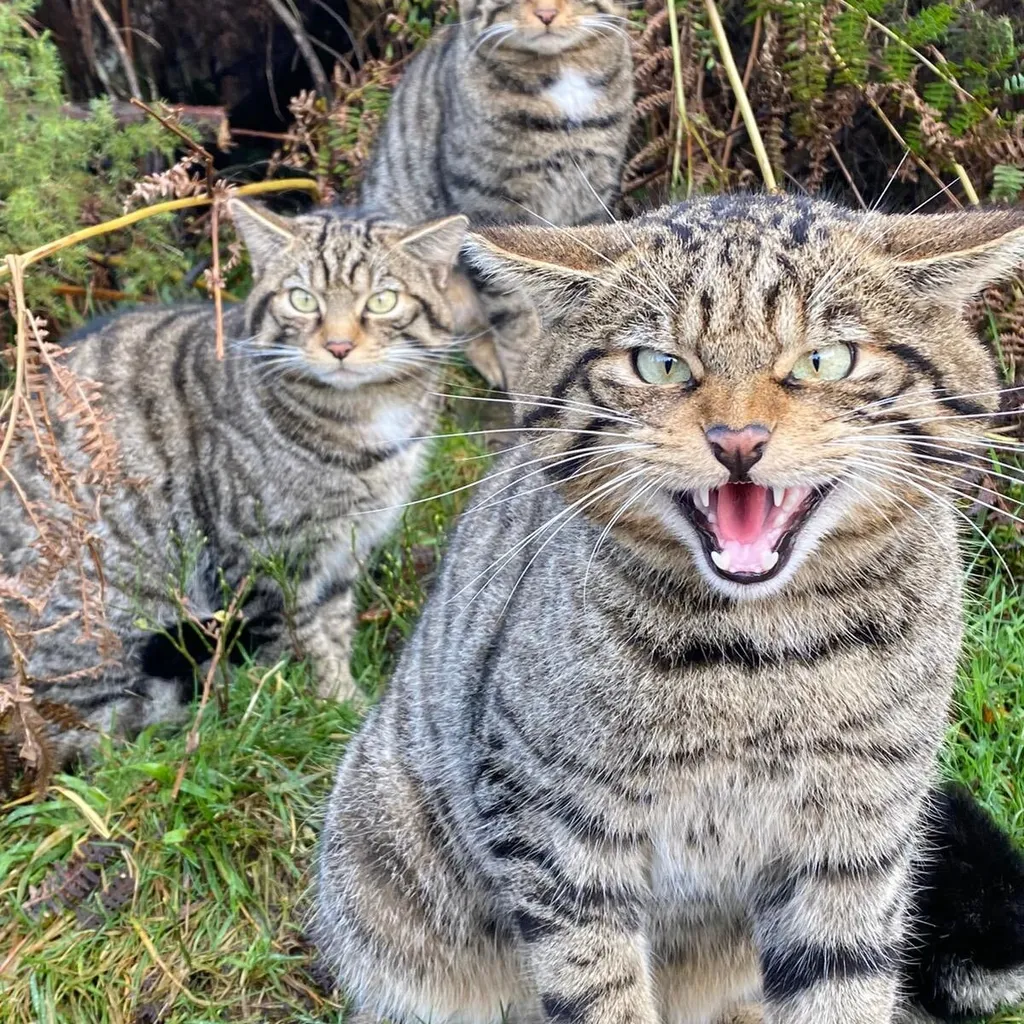
“It is still very early in the process but the first release of wildcats into Britain has been a success so far,” says Dr Helen Senn, Saving Wildcats Project Lead and RZSS Head of Science and Conservation Programmes.
Wildcat breeding
The wildcats were born at the Highland Wildlife Park, which is in now in its second successful year of Saving Wildcats’s breeding for release programme.

This summer, the project welcomed 13 kittens, which are due to be released into the wild in 2024.
Wildcat kittens are vulnerable in their first weeks and months, when they rely on their mothers. They are gradually prepared for the challenges of life in the wild over the next year.
When the kittens reach six to eight months old, they are transferred to pre-release enclosures, designed to reduce exposure to humans and disturbance. They are then released into the wild and left to fend for themselves, while being tracked daily.
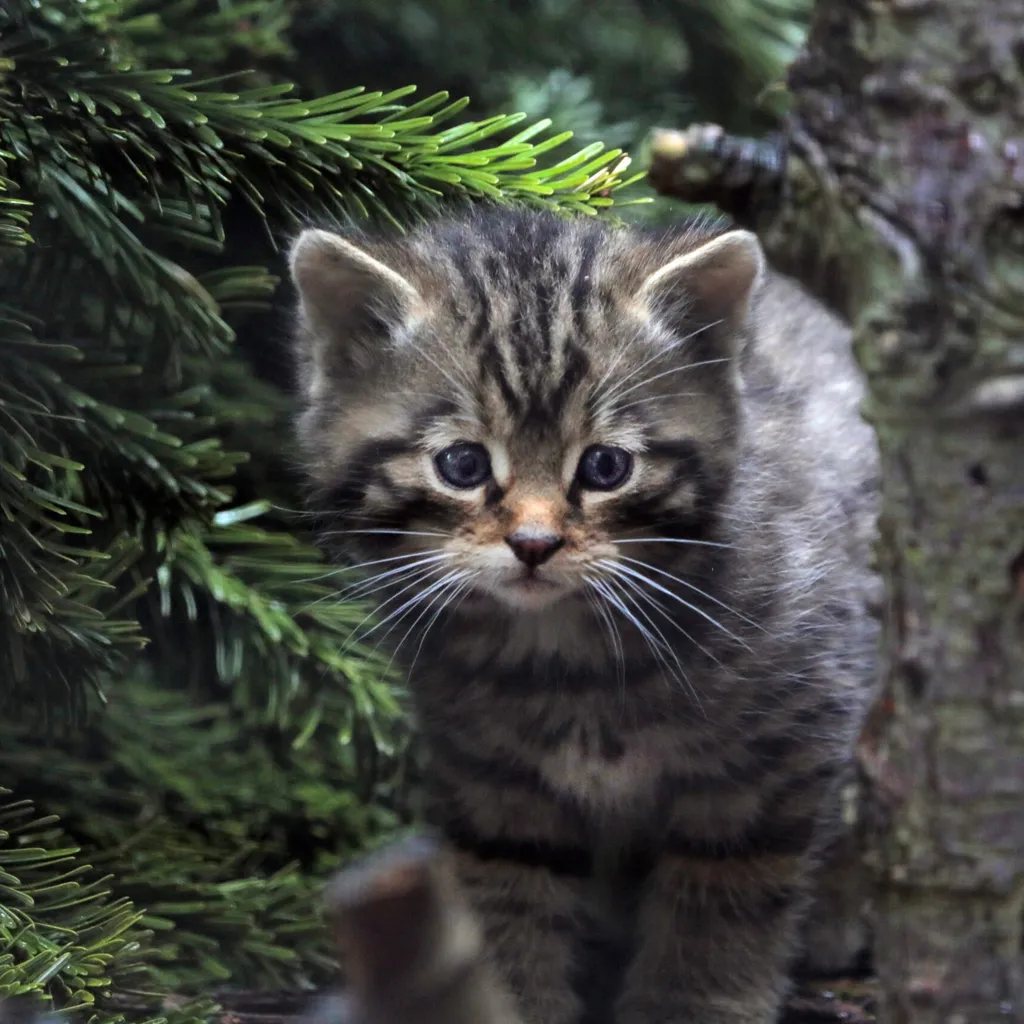
Risks to the wildcats
The Saving Wildcats field team have recorded one mortality since the beginning of this year’s releases.
“It would be highly unusual for all the released wildcats to survive the first year, even with the project’s careful preparations,” says Dr Senn.
“Life in the wild is full of risks and while most of the released wildcats are currently doing well, we must remember that these are now wild animals that are likely to face significant challenges as we move into winter, with extreme weather and a decline in natural prey expected.
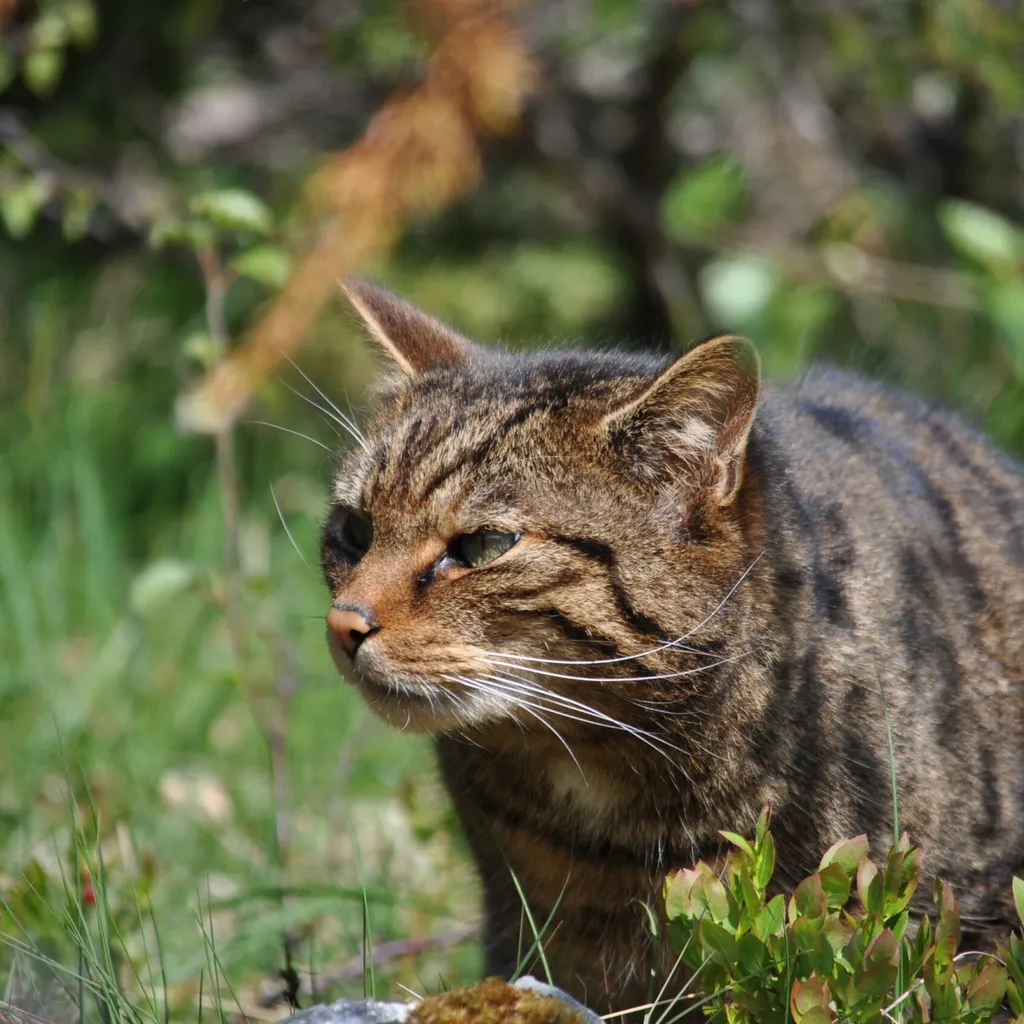
“The field team were alerted to a potential mortality through daily monitoring of movement data recorded by the GPS collars. They immediately searched for the wildcat at the last recorded location and were able to recover the body."
A post-mortem examination carried out by our expert veterinary team revealed the cat died of peritonitis, which is an infection in the abdominal cavity.
Risks that the remaining wildcats face include severe weather, food scarcity over winter, feline disease, road collisions, habitat disturbance and accidental harm from predator management.
History of wildcats in Britain
As a species, the wildcat has a long history in Britain, having crossed the continent into Europe 9,000 years ago, after the last Ice Age.
Wildcats survived until the Victorian era, when the change of land use and increased predator control saw the animals eliminated from England and Wales and pushed back into the far north and west of Scotland.
In the 20th century, wildcats began to make inroads again – but this brought the animals into contact with the domestic cat. Interbreeding raised the risk of catching diseases, and of genetic extinction.
Today, wildcats are a protected species and it is an offence to deliberately disturb a wildcat. The public are asked to avoid sharing any information about sighting.

The Saving Wildcats project is led by the Royal Zoological Society of Scotland (RZSS) in partnership with NatureScot, Forestry and Land Scotland (FLS), The Cairngorms National Park Authority, Nordens Ark and Consejería de Sostenibilidad, Medio Ambiente y Economía Azul de la Junta de Andalucía.
